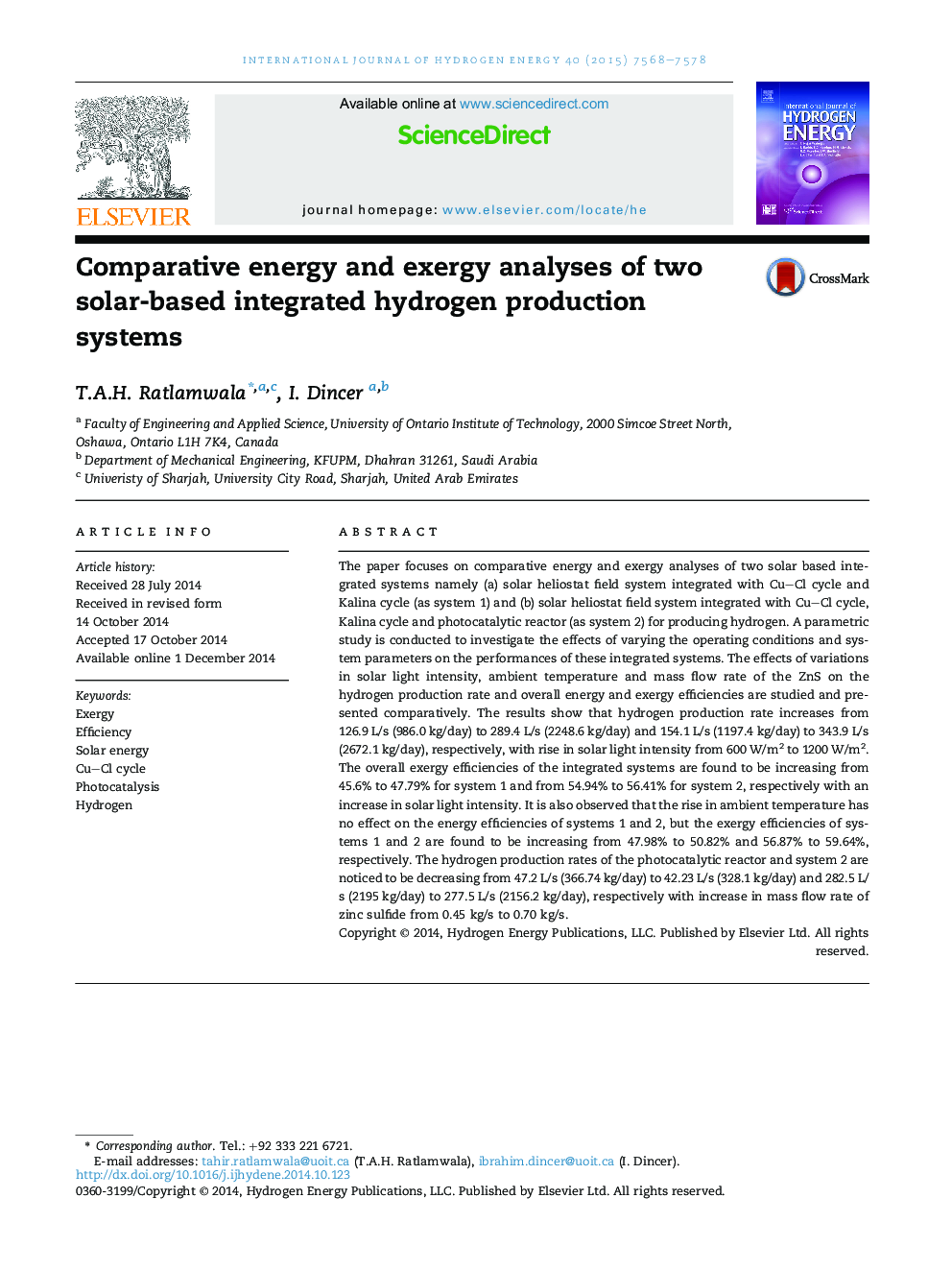| Article ID | Journal | Published Year | Pages | File Type |
|---|---|---|---|---|
| 1279730 | International Journal of Hydrogen Energy | 2015 | 11 Pages |
•Energy and exergy analyses of solar based integrated systems are carried out.•Effects of variation in solar light intensity, ambient temperature and mass of ZnS are studied.•A comparative study is performed to identify the best performing system.
The paper focuses on comparative energy and exergy analyses of two solar based integrated systems namely (a) solar heliostat field system integrated with Cu–Cl cycle and Kalina cycle (as system 1) and (b) solar heliostat field system integrated with Cu–Cl cycle, Kalina cycle and photocatalytic reactor (as system 2) for producing hydrogen. A parametric study is conducted to investigate the effects of varying the operating conditions and system parameters on the performances of these integrated systems. The effects of variations in solar light intensity, ambient temperature and mass flow rate of the ZnS on the hydrogen production rate and overall energy and exergy efficiencies are studied and presented comparatively. The results show that hydrogen production rate increases from 126.9 L/s (986.0 kg/day) to 289.4 L/s (2248.6 kg/day) and 154.1 L/s (1197.4 kg/day) to 343.9 L/s (2672.1 kg/day), respectively, with rise in solar light intensity from 600 W/m2 to 1200 W/m2. The overall exergy efficiencies of the integrated systems are found to be increasing from 45.6% to 47.79% for system 1 and from 54.94% to 56.41% for system 2, respectively with an increase in solar light intensity. It is also observed that the rise in ambient temperature has no effect on the energy efficiencies of systems 1 and 2, but the exergy efficiencies of systems 1 and 2 are found to be increasing from 47.98% to 50.82% and 56.87% to 59.64%, respectively. The hydrogen production rates of the photocatalytic reactor and system 2 are noticed to be decreasing from 47.2 L/s (366.74 kg/day) to 42.23 L/s (328.1 kg/day) and 282.5 L/s (2195 kg/day) to 277.5 L/s (2156.2 kg/day), respectively with increase in mass flow rate of zinc sulfide from 0.45 kg/s to 0.70 kg/s.
